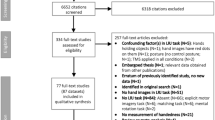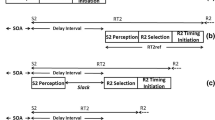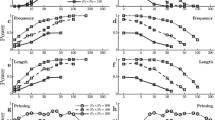Abstract.
In previous studies, subjects did not hit slowly moving objects as quickly as fast ones, despite being instructed to hit them all as quickly as possible. In those studies the targets moved at constant but unpredictable velocities, and it has been suggested that subjects were unable to adjust the hand's path to suit the velocity of the target. To compensate for this, they adjusted the speed of their hand to that of the target (speed coupling). According to this hypothesis, speed coupling is necessary only when subjects are unable to correctly predict the next target velocity and only if they have to be accurate. We show here that decreasing the uncertainty about the up-coming target's velocity or enlarging the tip of the hitting weapon does not make speed coupling disappear. Moreover, there is a negative correlation between hand velocity and strength of speed coupling, whereas the hypothesis predicts a positive correlation. The hypothesis is therefore rejected. We propose that speed coupling is a result of different speed-accuracy tradeoffs applying to different target velocities.
Similar content being viewed by others
Author information
Authors and Affiliations
Additional information
Electronic Publication
Rights and permissions
About this article
Cite this article
Brouwer, AM., Brenner, E. & Smeets, J. Hitting moving objects. Exp Brain Res 133, 242–248 (2000). https://doi.org/10.1007/s002210000371
Received:
Accepted:
Issue Date:
DOI: https://doi.org/10.1007/s002210000371




